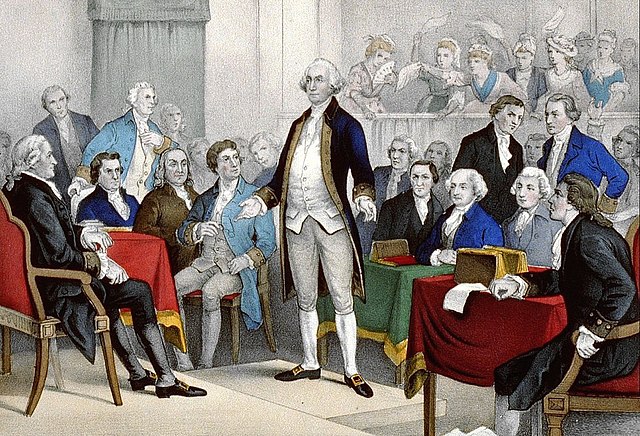Second Continental Congress
The Second Continental Congress was the late-18th-century meeting of delegates from the Thirteen Colonies that united in support of the American Revolution and the Revolutionary War, which established American independence from the British Empire. The Congress constituted a new federation that it first named the United Colonies, and in 1776, renamed the United States of America. The Congress began convening in Philadelphia, on May 10, 1775, with representatives from 12 of the 13 colonies, after the Battles of Lexington and Concord.
Congress Voting Independence by Robert Edge Pine
Image: Independence Hall 10
A 5-dollar banknote issued by the Second Continental Congress in 1775
An 1876 Currier and Ives portrait of George Washington being appointed commanding general of the Continental Army
The Thirteen Colonies were a group of British colonies on the Atlantic coast of North America during the 17th and 18th centuries. Grievances against the imperial government led the 13 colonies to begin uniting in 1774, and expelling British officials by 1775. Assembled at the Second Continental Congress in Philadelphia, they appointed George Washington as commander-in-chief of the Continental Army to fight the American Revolutionary War. In 1776, Congress adopted the Declaration of Independence as the United States of America. Defeating British armies with French help, the Thirteen Colonies gained sovereignty with the Treaty of Paris in 1783.
The Thirteen Colonies of British America: (Dark Red): New England Colonies (Red-Brown): Middle Colonies (Brown): Southern Colonies
Join, or Die by Benjamin Franklin was recycled to encourage the former colonies to unite against British rule.






